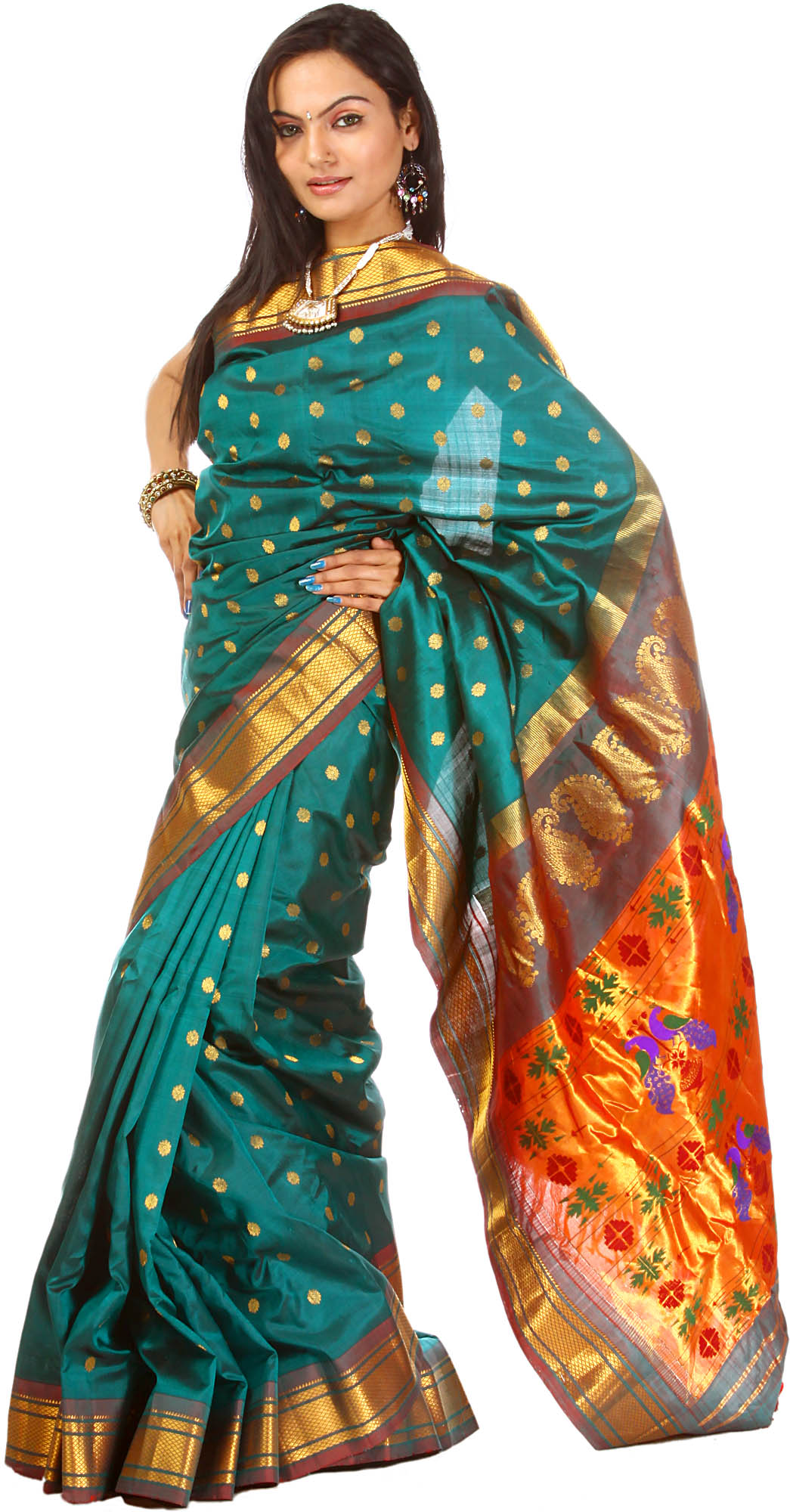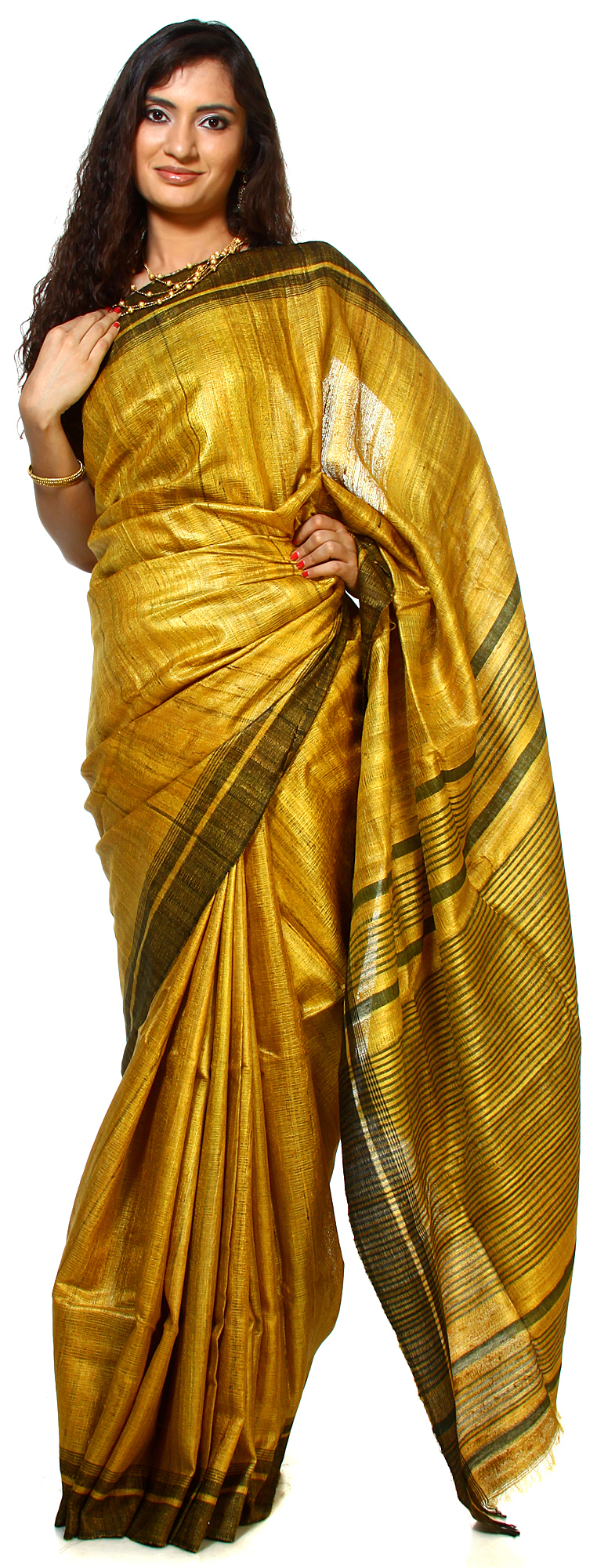Silk Sarees Biography
Source (google.com.pk)










Source (google.com.pk)
A variety of wild silks, produced by caterpillars other than the mulberry silkworm, have been known and used in China, South Asia, and Europe since ancient times. However, the scale of production was always far smaller than that of cultivated silks. There are several reasons for this: firstly, they differ from the domesticated varieties in colour and texture and are therefore less uniform; secondly, cocoons gathered in the wild have usually had the pupa emerge from them before being discovered so the silk thread that makes up the cocoon has been torn into shorter lengths; and thirdly, many wild cocoons are covered in a mineral layer that stymies attempts to reel from them long strands of silk Thus previously the only way to obtain silk suitable for spinning into textiles in areas where commercial silks are not cultivated is by tedious and labor intensive carding.Commercial silks originate from reared silkworm pupae which are bred to produce a white colored silk thread with no mineral on the surface. The pupae are killed by either dipping them in boiling water before the adult moths emerge or by piercing them with a needle. These factors all contribute to the ability of the whole cocoon to be unravelled as one continuous thread, permitting a much stronger cloth to be woven from the silk. Wild silks also tend to be more difficult to dye than silk from the cultivated silkworm.A technique known as demineralizing allows the mineral layer around the cocoon to be removed, leaving only variability in color as a barrier from creating a commercial silk industry based on wild silks in parts of the world where wild silkmoths thrive, such as Africa and South America.Silk, known as "Paat" in Eastern India, Pattu in southern parts of India and Resham in Hindi/Urdu, has a long history in India. Recent archaeological discoveries in Harappa and Chanhu-daro suggest that sericulture, employing wild silk threads from native silkworm species, existed in South Asia during the time of the Indus Valley Civilization, roughly contemporaneous with the earliest known silk use in China. According to an article in Nature by Philip Ball, while there are various evidences for silk production in China back to around 2570 BC, newly discovered silk objects from the Indus valley in eastern Pakistan are believed to date from between 2450 BC and 2000 BC, "making them similarly ancient". Shelagh Vainker, a silk expert at the Ashmolean Museum in Oxford, sees evidence for silk production in China "significantly earlier" than 2500–2000 BC, however suggests "people of the Indus civilization either harvested silkworm cocoons or traded with people who did, and that they knew a considerable amount about silk." Silk is widely produced today. India is the second largest producer of silk after China. About 97% of the raw silk is produced in the five Indian states of Karnataka, Andhra Pradesh, Tamil Nadu, West Bengal and Jammu and Kashmir. The North Bangalore regions of Muddenahalli and Kanivenarayanapura, the upcoming sites of a $20 million "Silk City" Ramanagara and Mysore contribute to a majority of silk production. Ramanagara was one of the major silk production site in Asia Another emerging silk producer is Tamil Nadu where mulberry cultivation is concentrated in Coimbatore, Erode and Dharmapuri districts. Hyderabad, Andhra Pradesh and Gobichettipalayam, Tamil Nadu were the first locations to have automated silk reeling units. Silk is produced year round in Thailand by two types of silkworms, the cultured Bombycidae and wild Saturniidae. Most production is after the rice harvest in the southern and northeast parts of the country. Women traditionally weave silk on hand looms, and pass the skill on to their daughters as weaving is considered to be a sign of maturity and eligibility for marriage. Thai silk textiles often use complicated patterns in various colours and styles. Most regions of Thailand have their own typical silks. A single thread filament is too thin to use on its own so women combine many threads to produce a thicker, usable fiber. They do this by hand-reeling the threads onto a wooden spindle to produce a uniform strand of raw silk. The process takes around 40 hours to produce a half kilogram of Thai silk.
Silk Sarees Photos Images Pictures 2013

Silk Sarees Photos Images Pictures 2013

Silk Sarees Photos Images Pictures 2013

Silk Sarees Photos Images Pictures 2013

Silk Sarees Photos Images Pictures 2013

Silk Sarees Photos Images Pictures 2013

Silk Sarees Photos Images Pictures 2013

Silk Sarees Photos Images Pictures 2013

Silk Sarees Photos Images Pictures 2013

Silk Sarees Photos Images Pictures 2013

Silk Sarees Photos Images Pictures 2013
No comments:
Post a Comment